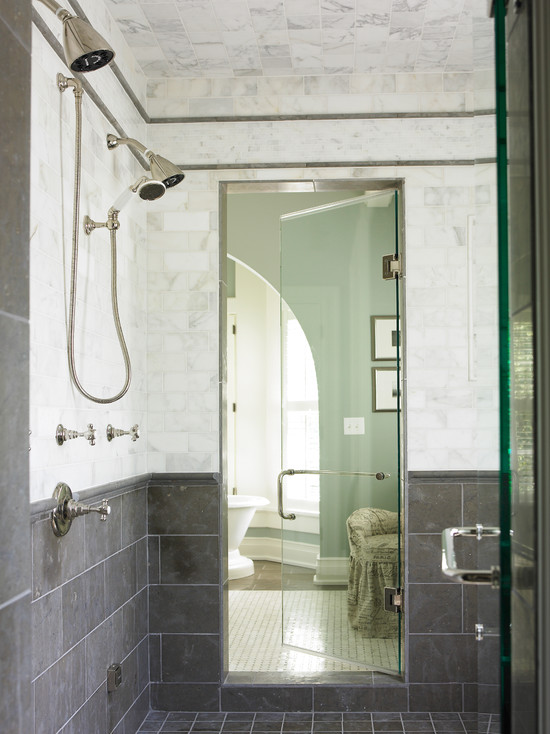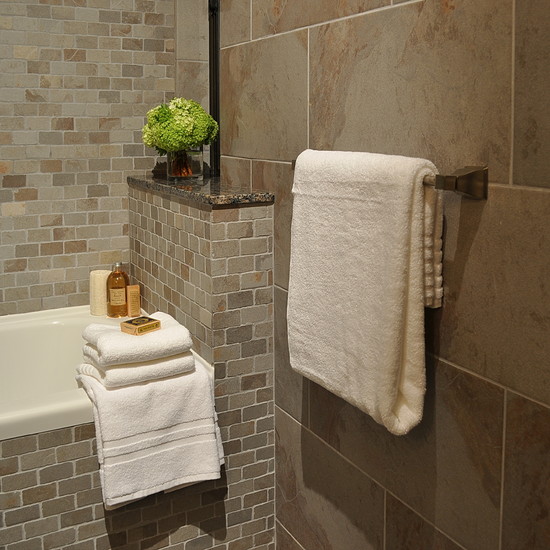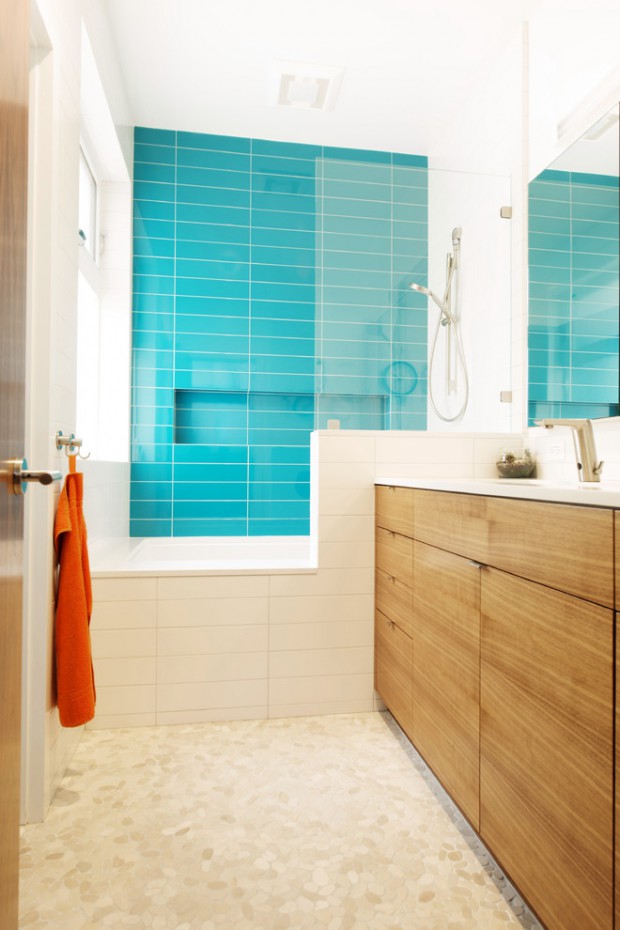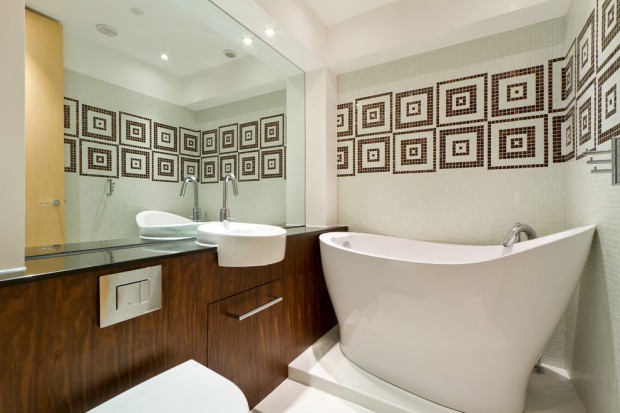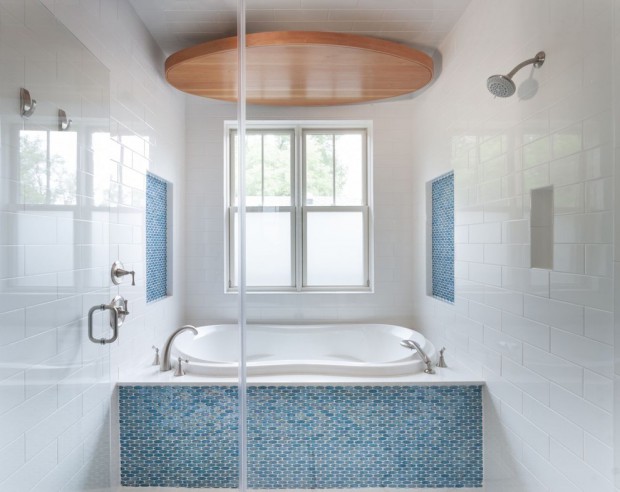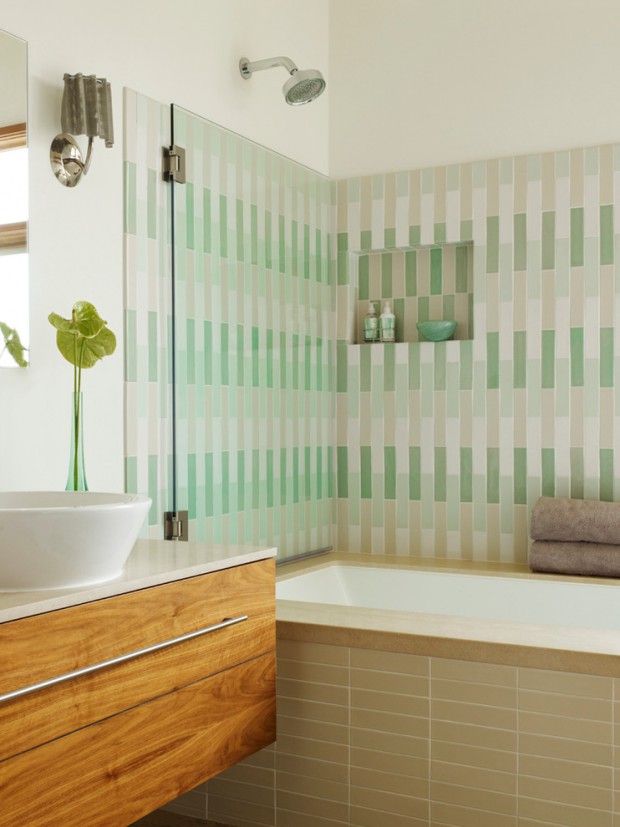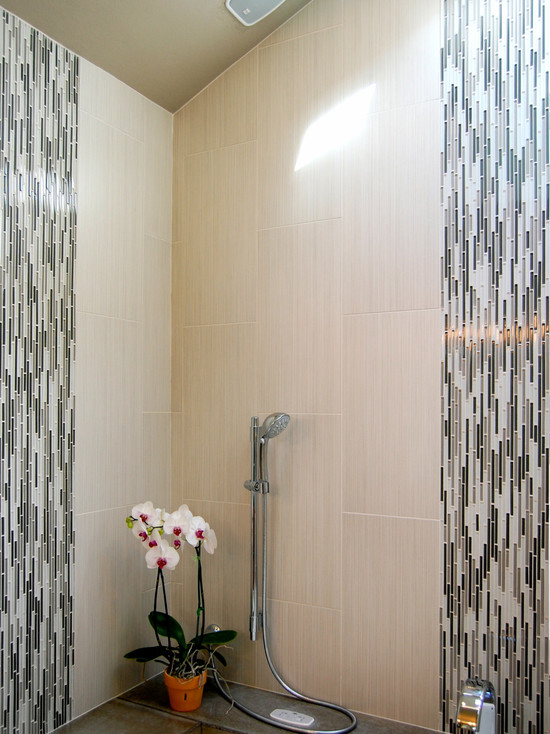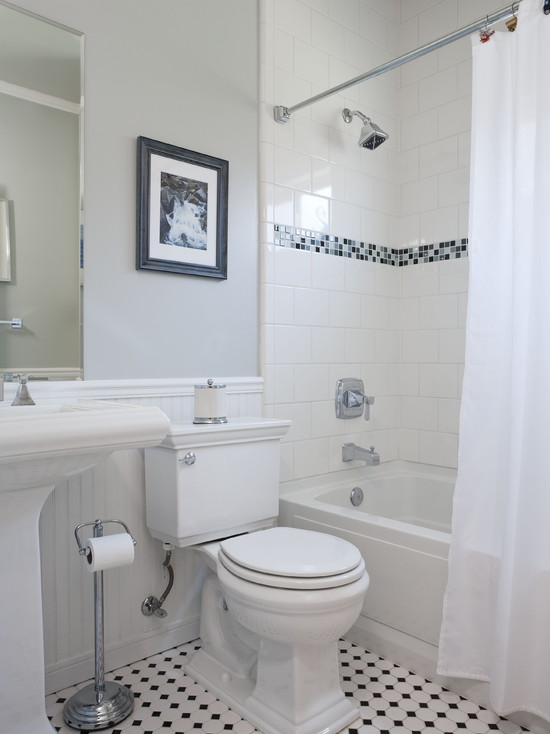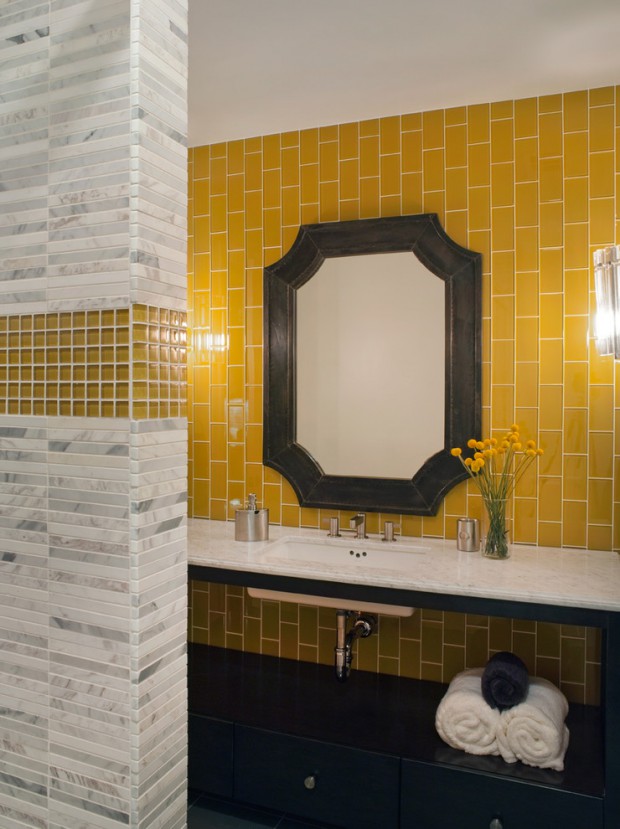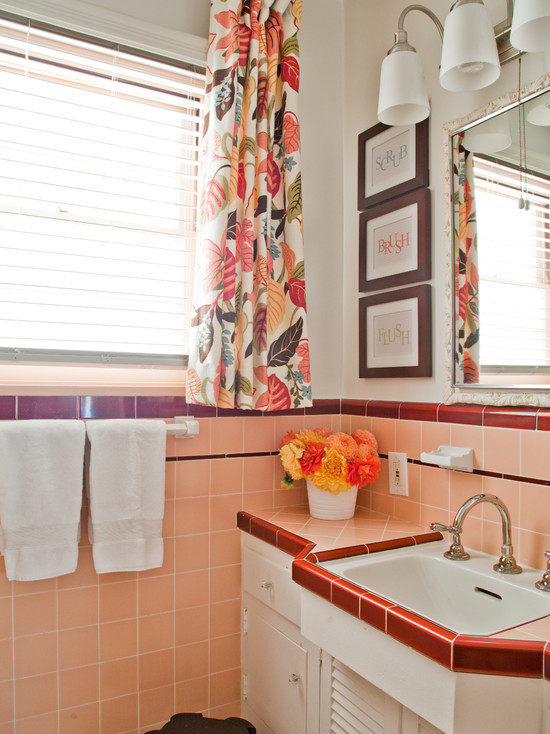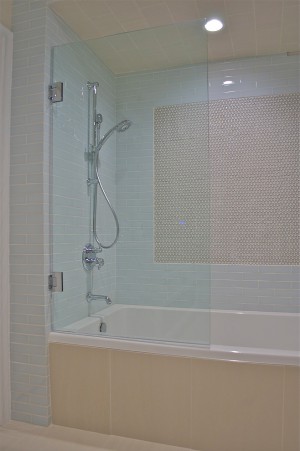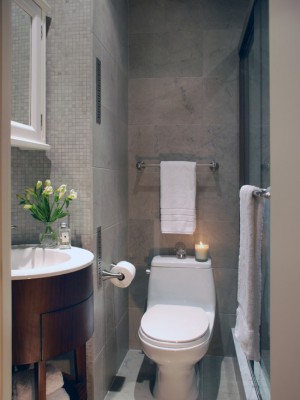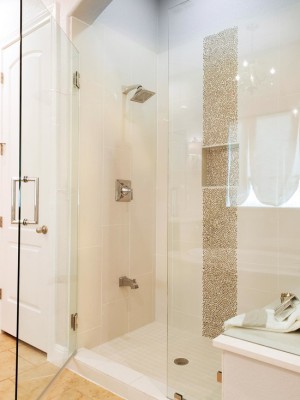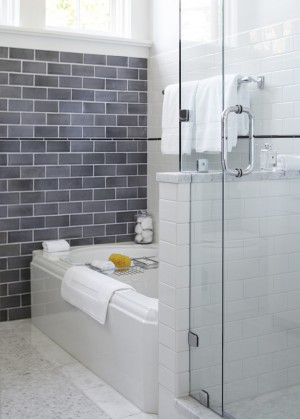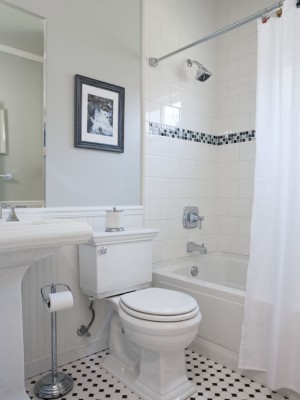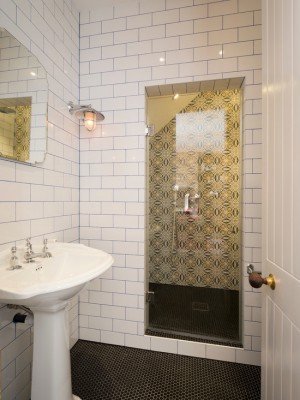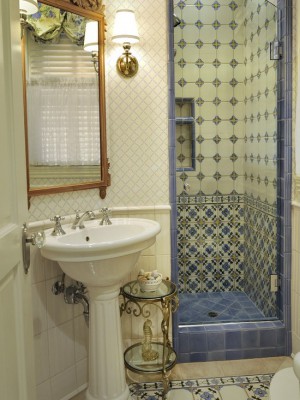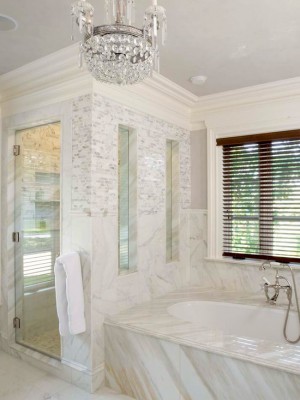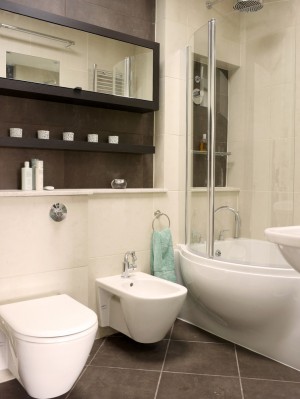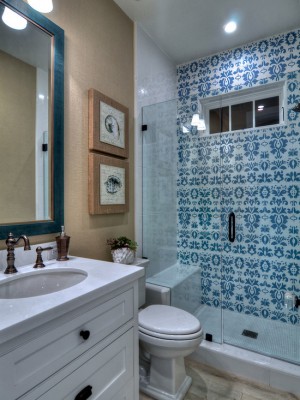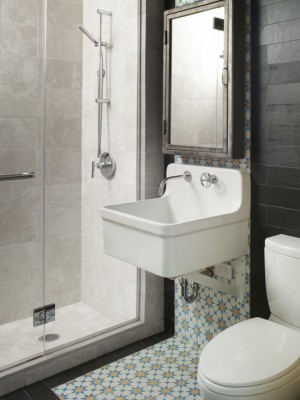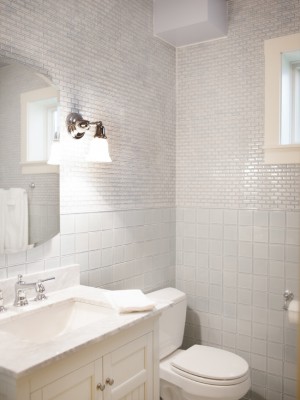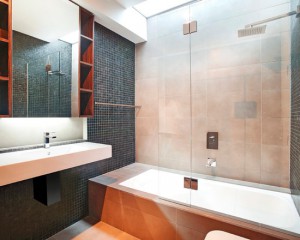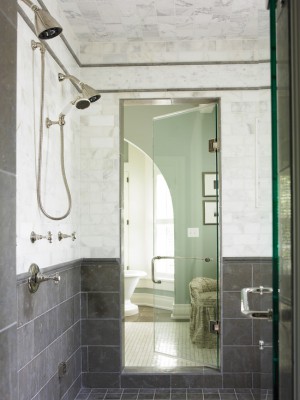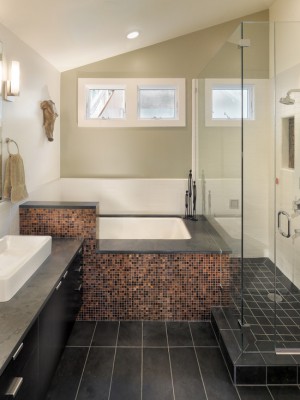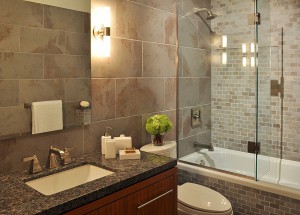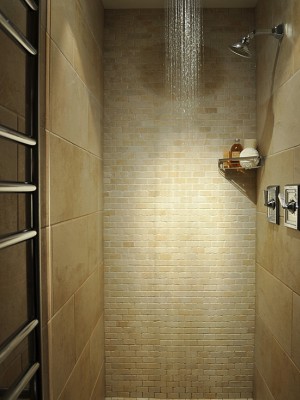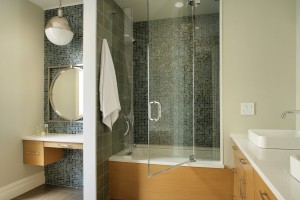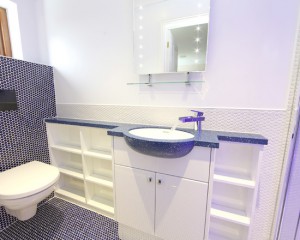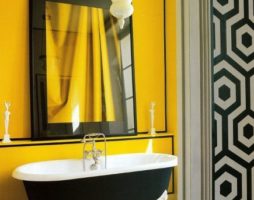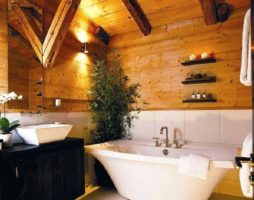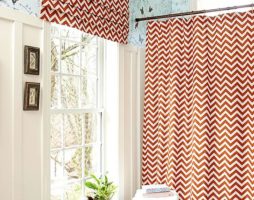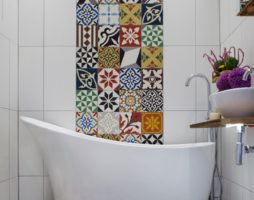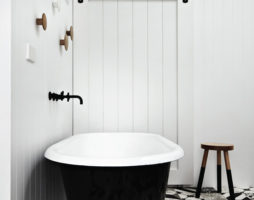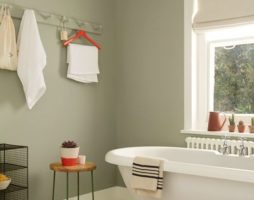In order to make the interior of the bathroom unique, masters use a lot of different materials in their work. They make up all sorts of compositions from them, collecting original color schemes. The combination of tiles in the bathroom is especially successful. To achieve extraordinary effects when facing surfaces, new technologies for laying it out help. There are many types of ceramic coatings. Tiles can shine with gloss or have a matte finish. Its shape is also different. Here are the traditional rectangular and square elements, as well as triangular and polygonal options. And all this splendor can be laid in such a way that you simply do not want to leave the transformed interior of the bathroom.
First steps
“Take a tape measure and measure all surfaces in the room (height and width) to calculate how much it will take to combine tiles in the bathroom”
Such a practical material for cladding, like tiles, today can imitate any natural texture (metal, wood cut, stone, etc.). In the interior of the bathroom, tiles allow the use of such characteristics as its wear resistance and moisture resistance.
But to design a bathroom in such material, you need to act in stages.
- Before you start puzzling over how to lay tiles, you need to make a plan of the room. It may well look like a drawing, most importantly, observe the proportions. If possible, make your plan as large as possible so that you can display small details like a mirror, a shelf, and others on it.
- Take a tape measure and measure all surfaces in the room (height and width). This is necessary in order to calculate how much it will take to combine tiles in the bathroom. Transfer the dimensions to the drawing and do not forget to take into account niches, ledges, doorways.
- Arrange the plumbing on the existing plan as you plan to do it in reality and also note its dimensions.
- Review your drawing. Everything should be marked on it:
a) sockets,
b) water heater
c) ventilation.
Please note that shelves and heated towel rails can be omitted, because how they will be attached after the completion of the finishing work and will not affect the layout of the tiles in any way.
- Once again, return to the bathroom and conduct a comparative analysis of the scheme with the real situation.
The bathroom plan is very important for calculating the design pattern, because a mistake of just a few centimeters can cost you the beauty of the decor. It will be a shame if the most beautiful elements are hidden around the corner of the washbasin. The effect of the integrity of the stop will be hopelessly lost.
back to index ↑Combining tiles in the bathroom: popular options
“Combining tiles on the bathroom walls will require finishing touches, so after laying it and connecting plumbing, fill the room with additional “chips”
Almost all owners of houses and apartments agree that everything in the bathroom should be tiled. It is both aesthetic and practical. The only question is how exactly to do it.You can use the tried and tested templates for finishing such premises or create your own exclusive version, and the more complex the invented composition, the more admiration it will cause.
Contrast separated by a frieze
With this method of finishing, there is no need to invent new layout schemes and think about options for combining tiles in the bathroom. Therefore, it is enough to provide the seller with room parameters, and he will accurately give you a breakdown of consumables. This method does not require combinatorial solutions. You simply purchase a frieze and two types of tiles that harmonize in color.
The peculiarity of this type of finish is that by dividing the tiles with a horizontal frieze, you will visually reduce the size of your bathroom. Since our bathrooms most often do not sparkle with space without this, such a result should be avoided. This is done in the following way. A frieze edging is made in the area above the washbasin or bathtub. The appearance of vertical lines will save the room from visual reduction. You can play at the intersection of frieze verticals and horizontals by organizing them on one of the walls. This technique will also not allow the room space to shrink.
Diagonal styling
From the point of view of interior design, this way of laying out the walls visually increases the volume of the room, both in height and in width. The elements of the frieze do not take part in the diagonal laying, so it is not worth spending money on them.
It will most likely be unrealistic for a beginner to combine tiles for diagonal laying in the bathroom. Here you need experience with this material and mathematical calculation. Without practice, it is difficult to make the correct markup and start laying the diagonal at the required level. When hiring a team of tilers, you should be prepared to fork out for professional work.
chess
Laying method does not require further explanation. Laying tiles in this order is quite simple. There is no need to draw here. Use tiles of the same size in your work, do not complicate your work. As for the shape of the tile, ideally it should be square, although you can create a checkerboard pattern with rectangles. You can lay out the "chessboard" vertically, horizontally or diagonally. It is possible to alter the textures of materials. You can lay out a chess pattern both along the entire wall, and only on its section, alternating it with a solid monophonic masonry.
modular masonry
The modular combination of tiles is called because to implement it in the bathroom you have to use tiles of arbitrary sizes. Tiles of different sizes are assembled into square or rectangular modules. Each such module can contain a dozen or more tiled elements. The main advantage of the method is the absence of a template binding. This means that each site can be individual in its sophistication and originality.
"In the dressing"
This method belongs to the basic ones. In fact, this is ordinary brickwork, however, in the case of a bathroom, it allows you to bring a touch of antiquity here. They implement such ideas with rectangular tiles, which can be in several shades. Walls "dressed" in "dressing" look quite impressive. But on the floor, this type of masonry loses all its charm and is perceived as something ugly, made by a non-professional.
Relief option
The combination of tiles in the form of a relief in the bathroom looks good. With this type of finish, laying is carried out with the elevation of one type of tile over another. That is, the main emphasis is on the selection of some fractions against the background of the bulk.The tiles imitating stone and glass are harmoniously combined. Relief facings also include mosaic solutions, especially those in which elements of different textures are involved.
Creative mess
This is the most budgetary way, as it allows you to combine all types of tiles at hand. Moreover, for 20 cheap units it is quite enough to put three expensive ones and the effect will turn out to be simply amazing. It is desirable to arrange materials in the same color range, but you can work with multi-colored residues. For a successful design of the bathroom, it is enough to select 5-6 tiles of each tone and lay them out in random order, without thinking about creating a scheme. In such a "creative mess" you can make inserts with a pattern on a tiled surface.
"Patchwork Quilt"
This is also a budget approach to decoration. To combine tiles in the bathroom in this case, it is enough to have only two or three of its types.. The alignment is performed symmetrically, with synchronous repetitions of the cycle. So that the design does not turn out to be catchy, it is better to work with plain tiles for 60%, and the remaining 40% can be a pattern. In this option, you may well work with tiles from outdated, stale collections on store shelves. They are always on sale. It is quite possible that the houses also have stocks from previous repairs. They, too, can be put to work.
Tiled assorted
This method is for spacious bathrooms, because combining different types of tiles will require a certain field of activity. Fantasies should be on what to turn around. The combination of tiles occurs in all directions at the same time. You can lay out the panel on the wall of your bathroom, assembling it like a puzzle, from various tile elements and fragmentary pieces.
Stylish accents
Combining tiles on the bathroom walls will require finishing touches, so after laying it and connecting plumbing, fill the room with additional “chips”. Such a “chip” can be, for example, a tiled countertop, on which tiles were used that correspond to the overall color concept of the design.
Any decorative elements that can emphasize a certain style will serve as a highlight.
Conclusion
In conclusion, it should be noted that the aesthetic component is the key to the success of any interior, therefore, the combination of tiles in the bathroom should be carried out in accordance with all the rules. Only in this case will the room be given both a general tone and a special atmosphere, which will make it flawless.
back to index ↑Photo gallery - combining tiles in the bathroom:
